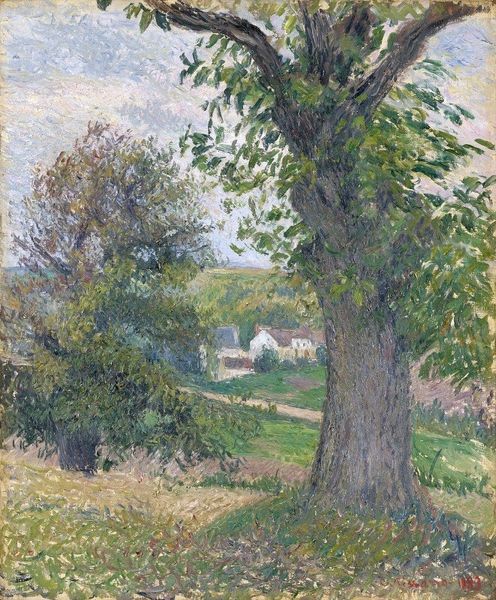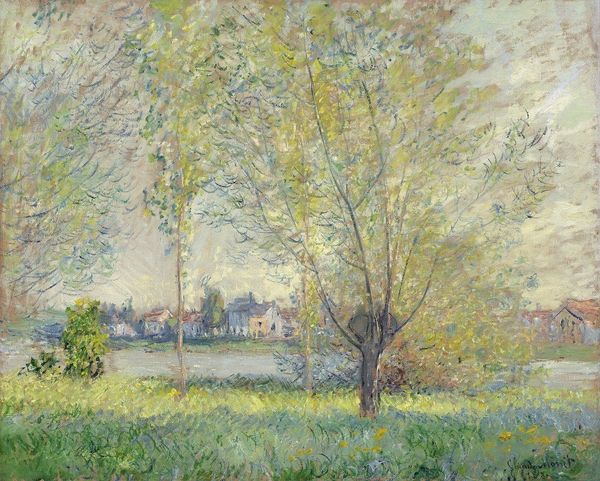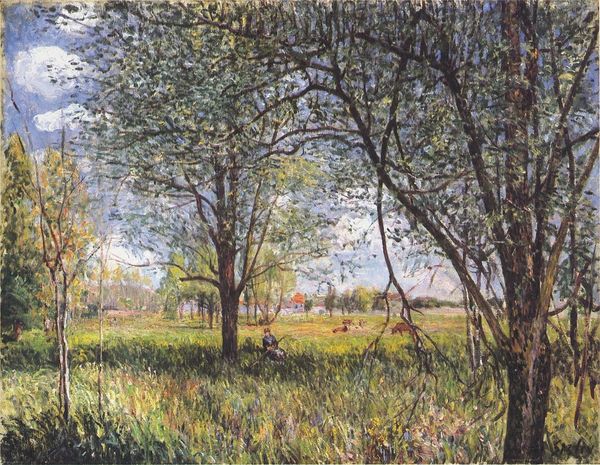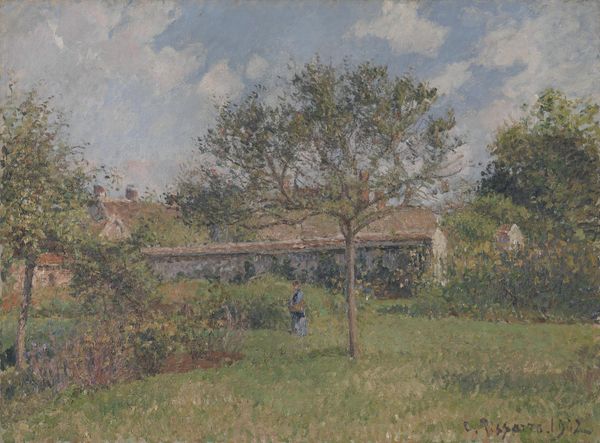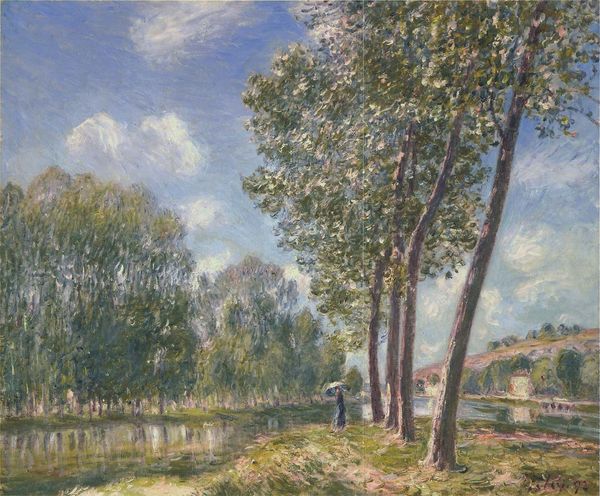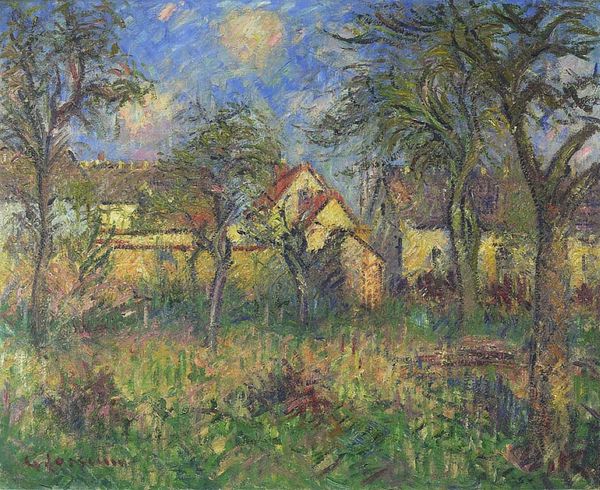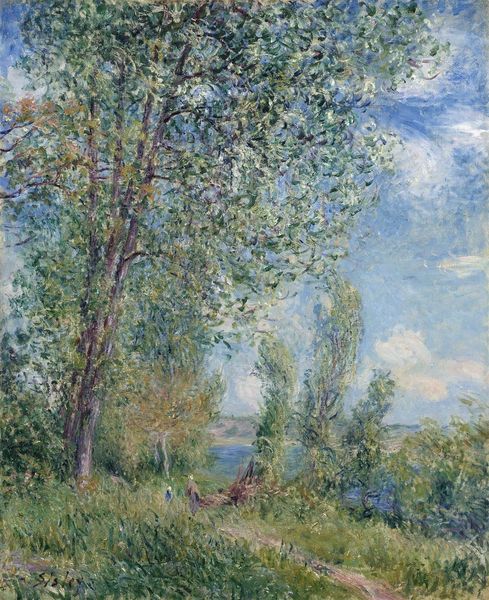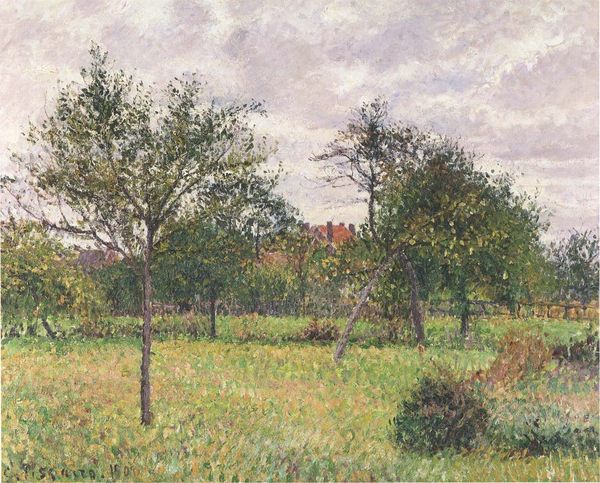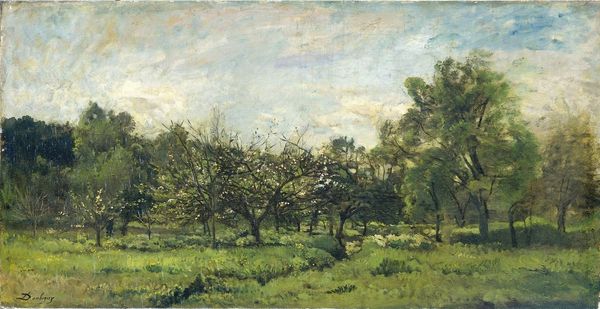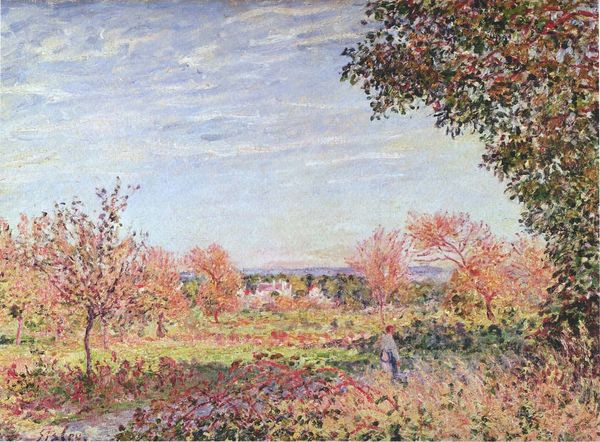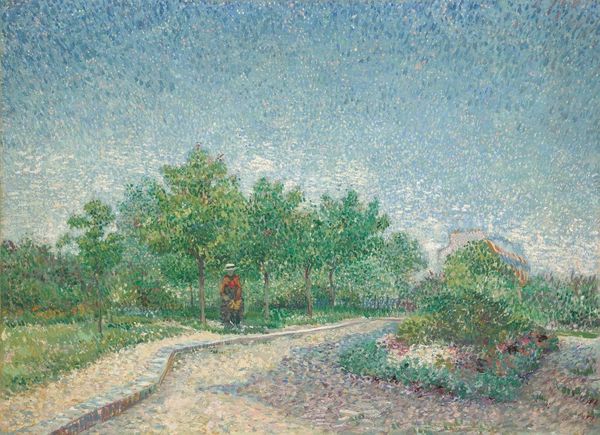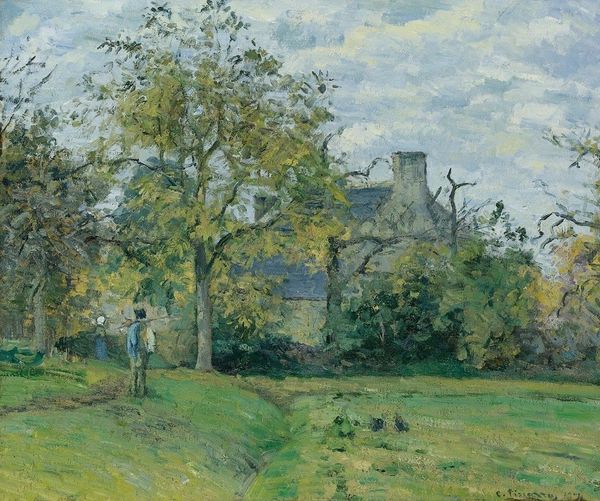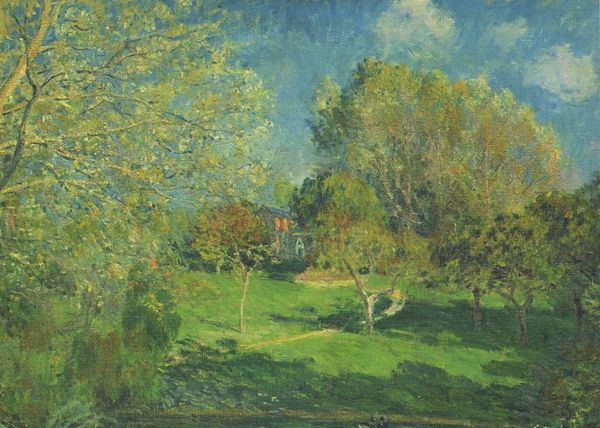
painting, plein-air, oil-paint, impasto, pencil
#
painting
#
impressionism
#
plein-air
#
oil-paint
#
landscape
#
impasto
#
pencil
#
line
#
cityscape
Copyright: Public domain
Editor: This is Alfred Sisley’s "View of the Village," painted in 1885. The textures seem soft, blurring the line between earth and sky, like a memory fading at the edges. What can you tell me about what you see in this piece? Curator: I notice first how the symbolism inherent in the landscape isn’t about a pristine wilderness, but a space interwoven with human presence. See how the village is nestled into the horizon? The Impressionists were fascinated by modern life, and this work embodies that. Editor: Yes, I see the village now, nestled there. But is it just about depicting modern life, or is there more to it? Curator: Think about what a village represents: community, shared experience, a collective history. The landscape isn't just scenery, but a stage for human life. The small figures almost blend with the landscape, echoing the intertwined fates of humanity and nature. What do the colors evoke for you? Editor: They're muted, almost dreamlike, so peaceful. Maybe Sisley felt connected to this place? Curator: Possibly, but also consider the collective visual language. Impressionism often used this soft palette to evoke a particular mood, tapping into shared emotions about the countryside – nostalgia, a sense of belonging, a quiet beauty accessible to everyone. Editor: So it's not just Sisley's feelings, but also tapping into a shared cultural memory? Curator: Precisely. And look at the arrangement - the eye is guided through the trees, over the meadow, to the village. Each element is placed to create a cohesive experience of this world. Each stroke has emotional and psychological intent. Editor: It makes the scene feel so alive and welcoming. I didn’t think of it as invoking shared values. Curator: The beauty of art lies in this convergence – the artist's unique vision resonating with our collective consciousness. Hopefully that's what the visitors will get from our discussion, a perspective that transcends art for art's sake.
Comments
No comments
Be the first to comment and join the conversation on the ultimate creative platform.
